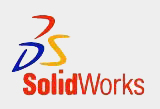 DriveWorks is an easy-to-use knowledge based engineering software to help you automate your designs without needing to write, or pay for, custom programming. The software copies existing files (called clones) before changing them to the user's needs. After running dozens or hundreds of specifications, you can imagine the large number of uncontrolled documents that could be floating around the network. In comes the Enterprise PDM Plug-In.
DriveWorks is an easy-to-use knowledge based engineering software to help you automate your designs without needing to write, or pay for, custom programming. The software copies existing files (called clones) before changing them to the user's needs. After running dozens or hundreds of specifications, you can imagine the large number of uncontrolled documents that could be floating around the network. In comes the Enterprise PDM Plug-In.The free Enterprise PDM plug-in can be found on the DriveWorks Labs site. You have the ability to download the add-in and even the source code to customize it on your own. What the plug-in does is allow you to have all the clones from DriveWorks saved into your vault, automatically checked-in and entered into a workflow. This means that you can have a reviewer glance over drawings to approve them before they're sent to the shop floor or your clients. It also makes it easier to control who has access to these files through your existing EPDM rules. There are, however, some things that DriveWorks users will want to make note of before using the plug-in.
DriveWorks (DW) requires that an existing assembly of master files exists in an accessible area. Simply put, for the most straight-forward DW implementations, you can simply place the master files into your vault and use the DW file management to point towards them in the new location. You will want to set up the local vault view for each DW user to be exactly same and create local copies of these files. For more interesting projects, further considerations are needed.
As we all know, EPDM requires that all reference files exist inside the vault in order to perform functions such as check-in. Mirrored parts, top-down designed parts and other external references will need to be redirected to files inside the vault. If these remain pointing to the original locations outside the vault, the plug-in will not be able to complete the check-in process and will abruptly stop running. The same result can be expected with design alternatives (another DW term for parts that are swapped out of the original assembly). If you already set up DW to look for alternatives outside the vault, make sure you redirect everthing to files in the vault. In short, if you're having trouble running without error messages, it is likely due to file references outside the vault.
On a recent project of my own, I kept having problems with a particular

assembly checking in. I went ahead and had DW clone every single file into my current project folder even if it wasn't changing. This helped me determine which files were the real culprit. It turned out to be a mirrored part that was referencing its other-hand part outside the vault. To make things work with little effort on my part, I saved the mirror part as a parasolid and brought it back in without the reference. This project was created for SolidWorks 2008, but had I been working with 2009, I would have used the new function to break the link to the original part (see image) during the Mirror Part command. This is a new feature in 2009 that will allow the creation of a new part with no reference at all to the original. Of course, you can replicate this process in 2008 by saving a copy of the original and then adding a Move/Copy Body feature to create the mirror. Regardless of method, just make certain that you remove all external references or, where possible, re-direct them to files inside the vault.
To learn more about DriveWorks, visit their website www.driveworks.co.uk or contact TriMech Solutions at 888-TriMech.





